School me on flour.
MizLizzie
6 years ago
Featured Answer
Sort by:Oldest
Comments (62)
annie1992
6 years agolindac92
6 years agoRelated Discussions
Help me make my own flour, cracked grain etc.
Comments (14)Lalitha- Sorry, I don't have any experience with, or information about, the mills you are inquiring about. One rule-of-thumb I can share: stones grind finer than steel burrs, and an impact mill the finest flour of all, and that's about all I can help you with; other than a great respect for German workmanship and they are indeed very handsome mills. The price would be my biggest deterrent. Even though I have a couple stone mills, I also keep extra stones for the mills because they can chip, flake and break (check for stones and grit in your grains/seeds/beans before adding them to the mill hopper), or glaze over from too much moisture in your grains/seeds/beans. The stones are also made from a variety of things, including man-made "stone". When using a stone mill, you may need to mill the grain on a coarse setting, and then run the flour through again on a finer setting in order to get the fine flour (especially necessary for making cakes and a fine-crumb for yeast/naturally-leavened breads. How an impact mill works: "Impact grinders use rows of 'blades' placed in circular rows on metal wheels. One wheel turns and the other wheel is stationary, like the stone grinder. But this is where the similarity ends. The two wheels are aligned so that the rows of blades intermesh, running extremely close, yet never touching the blades on the opposite wheel. The rotating wheel turns at several thousand RPM. As grain is fed into the center of the fixed wheel, the interaction between the two wheels `impacts' the grain and pulverizes it [Grainlady note: the grain "explodes" rather than being crushed] into fine flour as the grain works its way to the outside of the wheels." For REAL sandwich bread--- I would suggest purchasing a Pullman (Pain de Mie) Pan (a square pan with a lid). This pan will allow you to make that crustless, close-grained bread that will help you transition from commercial sandwich bread to homemade. A close-grain crumb is what you want in order to be able to cut thin slices, hold moist spreads (without dripping through a hole), and still be able to hold together to eat out-of-hand. That's the more-or-less "technical" characteristics for sandwich bread. A more open crumb is best used for toast. All those lovely places to hold melted butter and jam. I have a 1-pound Pullman Pan (perfect for hubby and me), and a 2-pound for when the house is full of family visiting. Another tip for making a fine-crumb bread is to add the fat early during mixing. The fat coats the gluten, similar to making short-crust pastry. If you want a more open crumb (as well as more loft), add the fat late in mixing, after the gluten has developed. For making 100% whole wheat bread (or multi-grain where one of the grains is wheat), I suggest using hard (spring or winter) white wheat over red wheat. White wheat flour has a mild flavor and lighter color and is less acidic-tasting than the flavor associated with "whole wheat bread" made with red wheat varieties. White wheat has the same plant traits and nutrition as red wheat varieties, it's just missing the genes for the bran color. There are three genes that make up the bran color. Early varieties of red wheat (such as Turkey Red) had all three genes and are very dark in color (bran, flour and finished product) and a strong "whole wheat" taste. Most of today's varieties of red wheat have one or two of those genes, while white wheat has none. I use and store both red and white varieties of wheat. Step back a generation or two and use a sponge method over the quicker straight (or direct) dough method. You'll find you get a finer texture. The "wait" gives the bran in the wholegrain flour time to soften (the hard sharp shreds of bran can actually cut the gluten strands), and you'll get a high-rising loaf of bread. According to "CookWise": "Researchers suggest that an ideal standing period is 2-1/2 hours." I typically use an overnight sponge with 100% wholegrain flour works well to lighten the bread. If I'm in a hurry, I use a 2-1/2 hour sponge with good results. I also add 1/4 t. ascorbic acid per loaf to counteract the negative effects from Glutathione (found in wheat germ) on gluten-development. This will help prevent baking those squatty loaves of 100% whole wheat bread. -Grainlady Here is a link that might be useful: King Arthur Flour - Pullman Pan...See MorePotato flour vs. potato starch flour
Comments (4)I make sweet potato powder and bet you could make potato flour using the same method. It may not be as fine as commercial potato flour. I just happen to have a box of Ener G Pure Potato Flour on hand and the ingredients...POTATO FLOUR ;-). How to: -Peel, cook, drain and mash 2-pounds potatoes. -Spread on lined trays or fruit roll-up sheets of a dehydrator in 1/2-cup amounts - spread VERY thin. (I can get 1 cup per fruit roll-up sheet in my NESCO American Harvest dehydrator). -Dehydrate at 120°F until CRISPY dry. Turn once to make sure both sides are completely dry. -Pulse the crispy dry dehydrated potatoes in a blender or food processor. To rehydrate this mixture for mashed potatoes, add hot water and add any seasonings you'd like. -Grainlady...See MorePie- out of AP flour, but have cake flour and bread flour
Comments (7)If you decide to use bread flour, one of the tips for using high-protein flour is to add a little more fat - above the amount called for in the recipe. Where the additional fat coats the flour, it blocks the water from being absorbed, so it also reduces the amount of gluten that is developed. Be sure to keep mixing to a bare minimum. You could also use a blend of bread and cake flour and use the regular amount of fat in the recipe. I disagree with Linda about the protein content being "miniscule". There are more baking "mistakes" made by using the incorrect flour. High-protein flour gives you tough pastry, cookies, and cakes..... Hydration will be completely incorrect - as the chart below will show. Information from "CookWise" by Shirley O. Chorriher: Cake flour - 8 g. of protein per cup National Brand (Gold Medal, Pillsbury) Bleached All-Purpose - 9-10 g. of protein/cup National Brand Unbleached All-Purpose - 12+ g. protein per cup Northern Unbleached All-Purpose (King Arthur) - 13 g. protein per cup Bread Flour - 13-14 g. protein per cup ~~~~~~~~~~~~~~~~~~~~~~~~~~~~~~~~~~~~~~~~ The water absorption capacity of white flours for 1-cup of water to form a sticky dough ball in a food processor: 14 g. protein Bread Flour - 2-cups (packed) + 1 T. 13 g. protein Unbleached Flour - 2-cups (packed) + 2 T. water 12 g. protein All-purpose Flour - 2-1/4 c. 11 g. protein All-purpose Flour - 2-1/3 c. + 1 T. 10 g. protein All-purpose Flour - 2-1/2 c. 9 g. protein Southern All-purpose - 2-1/2 c. + 2 T. 8 g. cake flour - 2-3/4 c. -Grainlady...See MoreUnusual ingredient -- Coffee flour or coffee cherry flour
Comments (4)Good question. I don't know. Hadn't really considered that since we don't have anyone who is very sensitive and one tablespoon in a full recipe wouldn't seem to make much difference. The package doesn't' say. I did a search and found a variety of answers -- from those who were clearly guessing to those saying no, to less caffeine than the beans to yes it does, but no quantification. The amount I used in my last recipe was about 1/4 tsp per muffin. If there is some caffeine but less than in ground coffee, it doesn't seem like enough to be an issue for most folks, but those who are very sensitive might want to avoid it -- or only for breakfast goods?...See Moreplllog
6 years agolast modified: 6 years agodcarch7 d c f l a s h 7 @ y a h o o . c o m
6 years agoMizLizzie
6 years agoannie1992
6 years agoAnglophilia
6 years agoplllog
6 years agoannie1992
6 years agolindac92
6 years agoplllog
6 years agoannie1992
6 years agolindac92
6 years agoJasdip
6 years agoAnna_Z
6 years agoannie1992
6 years agoAnna_Z
6 years agolindac92
6 years agoplllog
6 years agoMizLizzie
6 years agoannie1992
6 years agoAnna_Z
6 years agolindac92
6 years agolindac92
6 years agoplllog
6 years agolindac92
6 years agoplllog
6 years agolizbeth-gardener
6 years agoplllog
6 years agoAnna_Z
6 years agolizbeth-gardener
6 years agoplllog
6 years agoAnna_Z
6 years agolizbeth-gardener
6 years agolast modified: 6 years agoplllog
6 years agoAnna_Z
6 years agoplllog
6 years agolast modified: 6 years agoAnna_Z
6 years agoAnna_Z
6 years agoplllog
6 years agoAnna_Z
6 years agolindac92
6 years agoAnna_Z
6 years agoAnna_Z
6 years agolindac92
6 years agoAnna_Z
6 years agoAnna_Z
6 years agolindac92
6 years agoAnna_Z
6 years agoannie1992
6 years ago
Related Stories

COFFEE WITH AN ARCHITECTMike Brady Lied to Me
Why "The Brady Bunch" is a terrible guide for the architectural profession
Full Story
ORGANIZINGGet Up to Speed for Back to School — 12 Tips for Smooth Sailing
New schedules and clothes, paperwork piles ... and where did all the Band-Aids go? These tips will help you ace the new school year
Full Story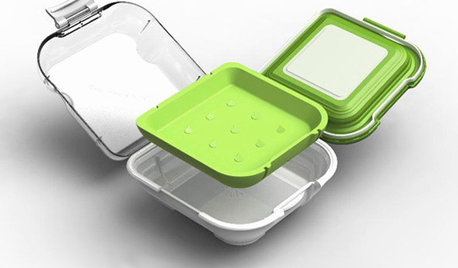
PRODUCT PICKSGuest Picks: Creative Ways to Pack School Lunches
These ingenious storage and styling solutions make any meal away from home a fun — and neat — affair
Full Story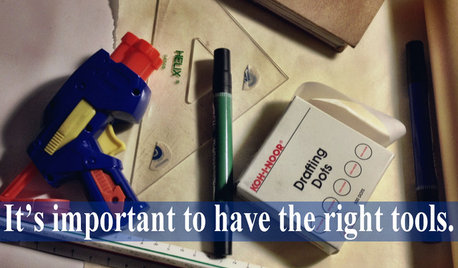
COFFEE WITH AN ARCHITECTWhat My Kids Have Taught Me About Working From Home
Candy and Legos aren't the only things certain small people have brought to my architecture business
Full Story
CONTEMPORARY HOMESHouzz Tour: Old-School Charm With a Contemporary Twist
Bright and open interiors with a serene vibe belie the challenges of building this Cornwall home
Full Story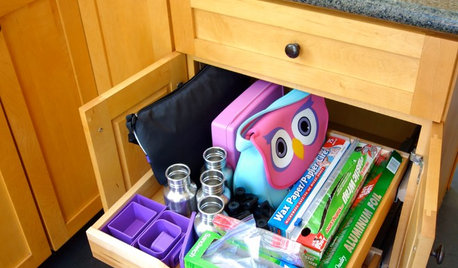
KITCHEN STORAGEEnd the School-Lunch-Prep Chaos
Make mornings less hectic with kitchen drawers and baskets dedicated to kids' lunch boxes and accessories
Full Story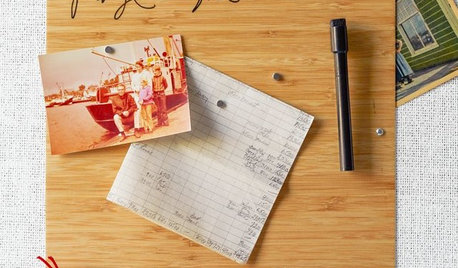
PRODUCT PICKSGuest Picks: 20 Fun Back-to-School Accessories
Make homework — or even a home office — more enjoyable with colorful organizers, decorations and more
Full Story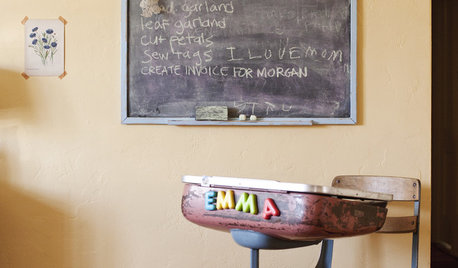
DECORATING GUIDESVintage School Desks Go to the Head of Design Class
Sharpen a pencil and take notes on these ideas for working a nostalgic element into your interior designs
Full Story
GARDENING AND LANDSCAPINGOld-School Green Design: Art Imitates Plants
Enjoy the play of color and form when nature and design work together
Full Story






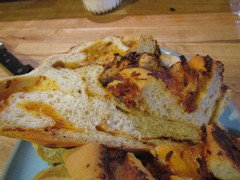

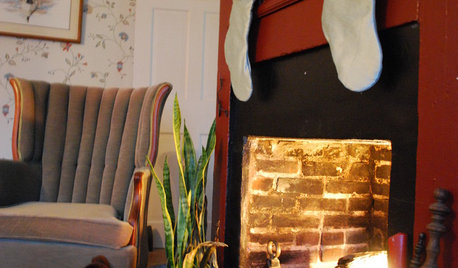
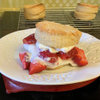
plllog